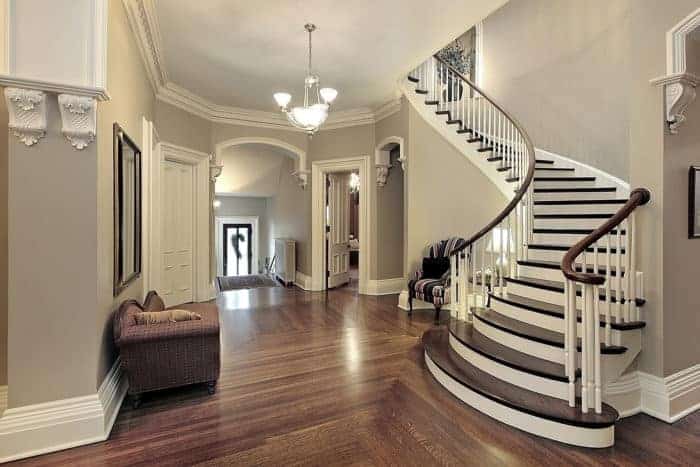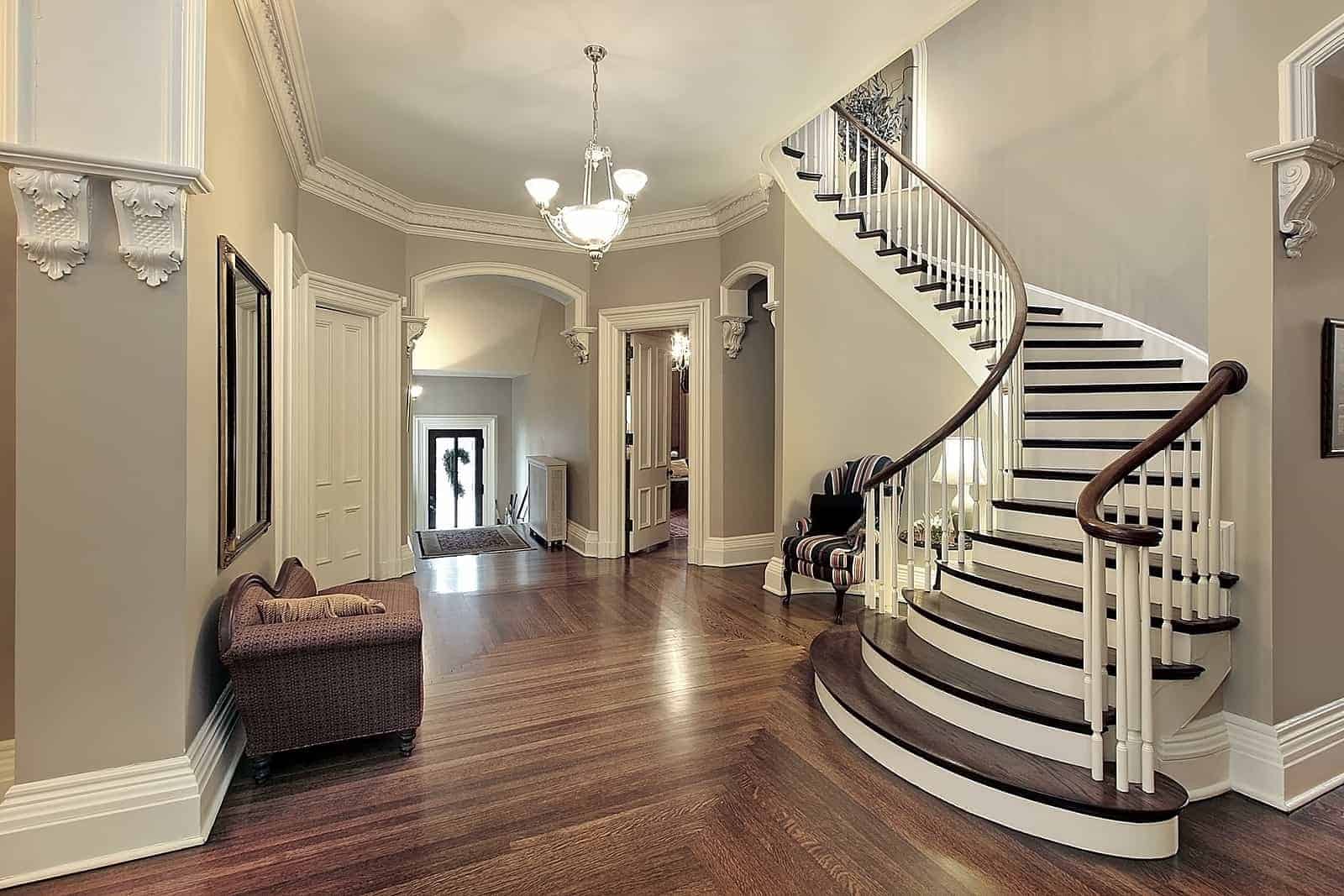5 Tips to a Traditional Staircase Design
by Nisha MacNeil, Design Manager
Staircases are a definite design feature that can produce that wow factor or elegant impression to your home renovation.
Here are some tips for a traditional-style staircase to get the look you want.

1. Stained treads and painted risers
The tread is the step part of the stair, and I believe to get the traditional look, it needs to be stained. The best way to accomplish this is to do a solid wood tread. Try to avoid using hardwood flooring strips as they simply won’t create the lasting look you are trying to achieve.
Once you’ve selected the flooring you want throughout your home, you can then purchase unstained solid wood treads and stain them to match. This can get tricky when you select a flooring that has a white or grey stain so beware.
If you must do the treads in a laminate or vinyl you will need to select a clicking style flooring to make this work. You can request from your floor installer to do a square built-up nosing in this click flooring to create the ‘look’ of a real solid wood tread. The stained tread should be accompanied by a painted riser (the part of the step that rises vertically). This is a classic traditional look.

If you prefer an all-wood stair then you can opt for a wood riser. Again, like the treads, opting for a solid wood riser that can be stained to match is the best way to create that seamless look.
2. Painted vs iron balusters
The balusters are the vertical posts under the handrail. These must be vertical and no more than 4” apart for safety. While you may have seen horizontal balusters, these are not to code as they are deemed ‘climbable’. They cannot be installed on a permitted project which will be inspected by a city official. There are ways around this, such as installing glass or plexiglass against the horizontal elements.

To get the traditional look a painted baluster is preferable. You can choose from a turned style that has more detail or a simple square or tapered cylinder. You may also consider an iron baluster to get a more European look as these can be simple or ornate depending on your design. All of these will give you the traditional look.
3. Stained handrail
I love a stained handrail for any home. I feel that it’s the most practical as it’s easy to keep clean and maintain. Grubby fingerprints are easy to wipe away and hide on this surface. It also creates a warm look and ties in with the treads.
4. Newel post
The newel post is the principal post at the foot of the staircase. It can be stained to match the treads or be painted white. Either will create a traditional look.
The most important aspect of the newel post is that it is large enough. A small newel post is scrawny and cheap-looking. You need to find a good 6×6 post or larger, depending on your space. This post can be simple in design or can have a shaker detail in it that may echo other elements of the house. Keep in mind that this is the place where you can tie in other millwork elements found throughout your space.

5. Carpet runner
This is the finishing piece to your staircase. I know lots of you are saying it’s sacrilege to cover a solid wood tread but believe me your staircase will be quieter and safer with a carpet runner. This runner should be set in about 3” from each stringer/wall and run from riser to riser (top to bottom).
I love to complete a runner with a leather border strip for a rich look. This is the place to have some fun with patterns and textures to bring life to your hallway.
—
Keep these elements and tips in mind when designing your new traditional staircase and you won’t go wrong.

